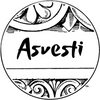The Importance of Primer Paint for Walls
When it comes to painting walls, primer paint often takes center stage as a crucial preparatory step, laying the foundation for a flawless finish. Understanding its significance, especially in the context of concrete walls, can vastly improve the outcome of your painting project. Let's delve into the world of primer paint, its benefits, and considerations, along with insights into primer paint cost and its specific application on concrete surfaces.

Primer paint serves as a bridge between the substrate (the surface being painted) and the topcoat, offering several key advantages. Firstly, it enhances adhesion, allowing the paint to grip the surface more effectively and reducing the likelihood of peeling or flaking over time. This is particularly important for concrete walls, which can be porous and uneven, requiring a strong base for optimal paint adhesion.
Primer paint helps to even out the surface by filling in minor imperfections and providing a uniform base color. This not only improves the appearance of the final paint job but also ensures consistent coverage and color accuracy. For concrete walls, which may have texture variations or patchy areas, using a primer helps achieve a smooth and professional-looking finish.
Moreover, primer paint can also act as a barrier, preventing stains, moisture, and other contaminants from seeping through and affecting the topcoat. This is especially relevant for concrete walls, which are susceptible to moisture penetration and may require additional protection against water damage or efflorescence.
When considering the cost of primer paint, it's essential to weigh the benefits against the investment. While primer paint adds an extra step to the painting process, its advantages in terms of durability, aesthetics, and long-term maintenance savings often outweigh the initial expense.
Additionally, choosing a high-quality primer specifically formulated for concrete surfaces can further enhance its effectiveness and longevity.
Applying primer paint to concrete walls involves thorough surface preparation, including cleaning, repairing cracks or damage, and ensuring proper drying time before painting. Using a roller or brush, apply the primer evenly, working in small sections to avoid drips or uneven coverage. Once the primer has dried completely, typically within a few hours to overnight, you're ready to apply the topcoat paint of your choice.
Primer paint plays a vital role in achieving professional results when painting walls, particularly concrete surfaces. By promoting adhesion, smoothing the surface, and providing a protective barrier, primer sets the stage for a durable and aesthetically pleasing finish. While the primer paint cost may factor into your budget, the long-term benefits justify the investment, ensuring a lasting and impactful transformation for your walls.
